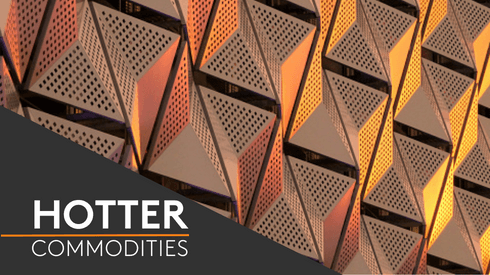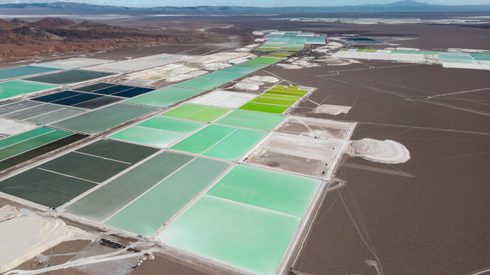In an interview with Fastmarkets on Friday April 19, Stephen Hayward, vice president of operations at Green Li-ion, said that the new facility in Atoka, Oklahoma, has a daily black mass processing capacity of about two tonnes – equivalent to about 730 tonnes of black mass per year – and can produce battery-grade precursor cathode active material (pCAM) in about 12 hours, with a 95% or higher recovery rate. According to Hayward, the resulting output tonnage is dependent on the feedstock.
The facility is now “fully commissioned,” with final testing expected to be completed in the near future. Hayward said that it was estimated that the facility would “be producing battery-grade pCAM in the new few weeks.”
“There’s two phases of the recycling space when you get to your lithium end-of-life batteries,” Hayward said. “Phase one is the mechanical process, your shredding, and we don’t see a shortage there… there’s a lot of mechanical equipment and suppliers available in the market today.” He continued, saying that there is “quite a lot of capacity available in terms of black mass and cathode powder, meaning scrap from cell manufacturers.”
But, Hayward said, the space where Green Li-ion sits – and where the company sees “the current gap in the market” – is that second phase, the chemical processing of the black mass.
“Even in that space,” Hayward said, “there’s different generations of recycling. There’s the recycling where you take a black mass or cathode powder [and turn it] into the various separate sulfates, like manganese sulfate, cobalt sulfate, nickel sulfate, and then your lithium carbonate.” But, the challenge then becomes turning those sulfates back into a pCAM and cathode active material (CAM), in order for that material to be turned back into batteries.
“By recycling those separate sulfates, you need to send it back to Asia today to [be] put back into pCAM and CAM format,” Hayward said. But, Hayward questioned, if the whole purpose of clean energy is to reduce carbon footprints, “do we really reduce the carbon footprint by having to send all these sulfates back across the ocean, and put back on trucks and [driven] back and forth? The short answer is no.”
“You want to get from your end-of-life battery to shredding, to your pCAM so that CAM manufacturers can use it to put back into cell manufacturing with as little logistics in between as possible,” Hayward said, which makes Green Li-ion very unique as a technology provider, in that “we go from black mass and cathode powder directly to battery-grade pCAM and lithium carbonate, so there’s no need for us to send our sulfates back to Asia to be put back into a pCAM format and a hydroxide format.”
Hayward said that in addition to the pCAM and lithium carbonate, Green Li-ion’s process also produces an industrial-grade graphite.
He also discussed the flexibility in Green Li-ion’s technology to be able to customize the chemical process to match the specifications of whatever black mass chemistry the company receives.
“We can ultimately dose per spec,” Hayward said, so the technology can be adjusted depending on the type of feedstock. “It doesn’t matter what we’re putting in at the front end.”
This flexibility was mentioned in the company’s April 11 press release on the launch of the new facility, saying that the plant “and all other Green Li-ion installations are fully customizable, capable of producing materials meeting the specifications battery cell producers require, and based on customers’ desired material output from the plant.”
Hayward said that the company’s business model also allowed flexibility in the form of licensing Green Li-ion’s technology, and through the use of modular units.
“We have two models,” Hayward said, “we do our own tolling, and we license our technology. So, anyone who really has black mass today can create a true closed loop system by using their own black mass or cathode powder. They can, with our support and our technology and our equipment, cycle directly back to pCAM and create a true closed loop.”
“We want to encourage the market to go from end-of-life battery shredded directly to pCAM,” Hayward said. “That’s why we want to license our technology…it’s a lower cost…it really secures the critical material, it removes the logistics between different plants and centralized locations and even countries. It’s a better way of doing things.”
Hayward said the company has seen interest in licensing from lead battery processors who are “diversifying themselves right now, but they don’t specialize in this kind of technology,” so that they can recycle both lead acid and electric vehicle (EV) batteries. Other interest has come from cell manufacturers and industrial companies.
“If they’ve got enough black mass,” Hayward said, “instead of selling their black mass, you can just…include our technology and close loop [the] system right there at their own site.”
Which, he said, “is really what the IRA [Inflation Reduction Act] wants.”
Since 2021, the Biden administration has made multiple announcements regarding funding and regulations for ensuring the US’ battery and battery materials supply chain through the Bipartisan Infrastructure Law and IRA.
But with the IRA has come proposed rules that restrict access to 30D tax credits for using battery components and critical minerals extracted, processed, or recycled by a Foreign Entity of Concern. Additionally, for tax credit eligibility, the battery of the EV purchased must have 50% of its components processed or extracted in the US or a US free-trade agreement partner, or recycled in North America. This requirement will increase to 80% by 2027.
Hayward said that the pCAM produced by the Oklahoma Green Li-ion was facility is IRA complaint, saying, “The IRA wants us to keep [these materials] within the borders of the US…So we have the technology and solution to fill that gap, not just take it to sulfate then, where you need to send it outside of the country, which is very difficult to track and it doesn’t really secure your critical materials.”
“It’s as if the IRA had written the rules based on our technology,” Hayward said.
Hayward said the company was looking out to future rounds of Department of Energy funding, but that the company had decided to first go from the lab to a pilot program, and then turn toward industrial-scale production.
“We wanted to first do the foolproof concept on an industrial scale,” Hayward said. “Then we have the ability to go, both ourselves and for our clients…to apply for grants with the proven-out industrial technology, making the grant process a lot easier.”
“We wanted to eliminate…as much risk as possible during this process,” Hayward said.
In addition to the GLMC-1 model, as built in Oklahoma, Green Li-ion also has a larger design dubbed the GL Train, capable of processing 3,000 tonnes of black mass from nickel-manganese-cobalt (NMC) batteries, according to Hayward.
Green Li-ion also has developed a small-scale industrial unit of a GL LFP unit, capable of processing material from lithium-iron phosphate (LFP) batteries into lithium carbonate and graphite.
In response to potential dangers regarding processing battery materials from LFP batteries, Hayward said that the GL LFP systems include a wastewater treatment system “that ultimately cleans up the water, and we actually reuse the water and cycle in back into our equipment,” as well as using air scrubbers to prevent air emissions.
Hayward said that “by the time it gets to us, it’s already shredded, it’s just a bag of powder,” so the safety risks are much lower.
“Green Li-ion’s installation closes a critical gap in the North American battery recycling supply chain,” Leon Farrant, chief executive officer and co-founder of Green Li-ion, said in the April press release. “We aim to show American companies the benefits of a fully customizable and fully vertically integrated battery recycling solution when operating as part of an existing manufacturing process.”
Keep up to date with global market insights and predictions for the battery recycling and black mass market. Talk to us today.





